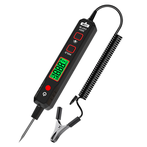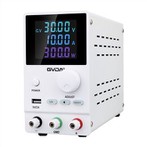The differences between coating thickness gauges and ultrasonic thickness gauges are as follows:
common ground:
Coating thickness gauge and ultrasonic thickness gauge are both non-destructive testing instruments, which measure the thickness of materials without damaging them. Both coating thickness gauge and ultrasonic thickness gauge can measure the thickness of materials in contact from one side of the material through a probe. This avoids the drawbacks of measuring thickness from both sides using calipers, micrometers, gauges, etc., and leverages the advantages of non-destructive testing, making it widely used in important fields such as sheet metal manufacturing, pipeline anti-corrosion, electroplating and coating, mechanical component manufacturing, aerospace, etc. Coating thickness gauges and ultrasonic thickness gauges are used for material thickness measurement in different fields. In fact, coating thickness gauges focus more on measuring surface coatings, while ultrasonic thickness gauges focus on measuring substrate wall thickness and plate thickness.
Difference: Coating thickness gauge
Coating thickness gauge, also known as coating thickness gauge, coating thickness gauge, coating thickness gauge, film thickness gauge and other flexible names, is mainly used to measure the thickness of coatings, anti-corrosion coatings, electroplating coatings, plastics, paints, plastics, ceramics, enamel and other coatings on metals. Therefore, it is officially named as coating thickness gauge in national standards. It can also be extended to indirectly measure the thickness of paper, film, board, etc. (indirect measurement methods can be consulted by calling Times Peak Company at 133669001010). The accuracy of the coating thickness gauge is relatively high, generally measured in micrometers, and the display resolution can reach accuracies such as 0.01, 0.1, and 1um. The range of the coating thickness gauge is generally 0-1250um; special ranges are 0-400um and 0-50mm.
There are currently two mainstream methods for coating thickness gauges: magnetic method and eddy current method, also known as magnetic and non-magnetic method, and iron-based and non-ferrous method.
Magnetic method: The iron-based coating thickness gauge uses magnetic sensors to measure non ferromagnetic coatings and coatings on ferromagnetic metal substrates such as steel and iron, such as paint, powder, plastic, rubber, synthetic materials, phosphating layers, chromium, zinc, lead, aluminum, tin, cadmium, porcelain, enamel, oxide layers, etc.
Eddy current method: Non iron based coating thickness gauge uses eddy current sensors to measure enamel, rubber, paint, plastic layers, coatings, etc. on non-ferrous metal substrates such as copper, aluminum, zinc, tin, etc. Coating thickness gauges are widely used in manufacturing, metal processing, chemical industry, commercial inspection and other testing fields.






